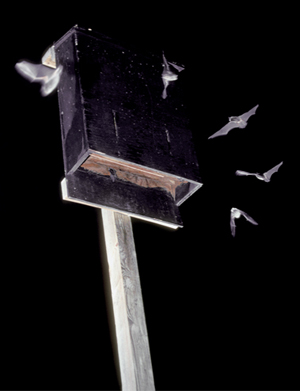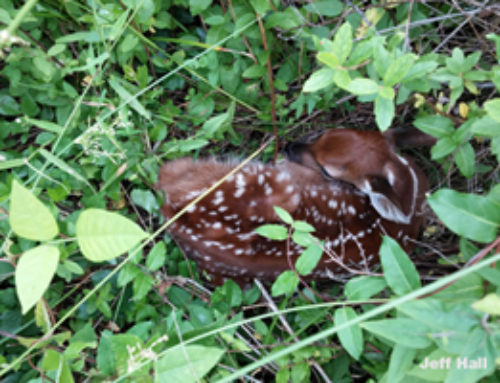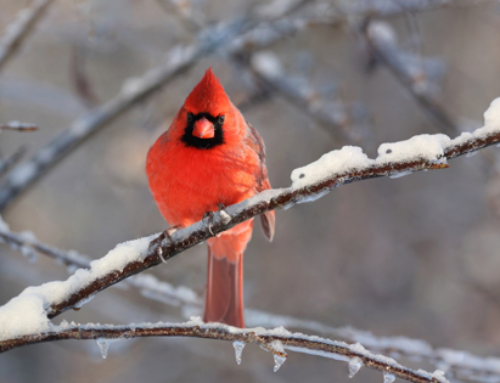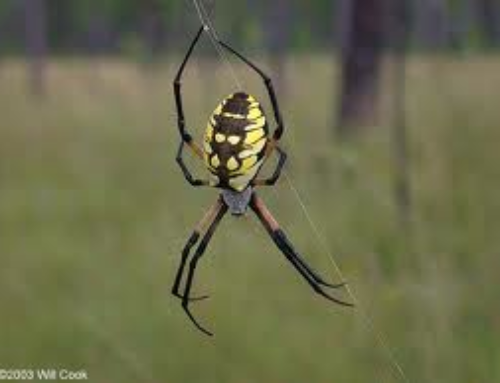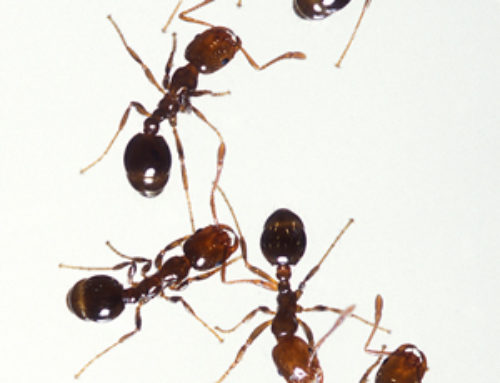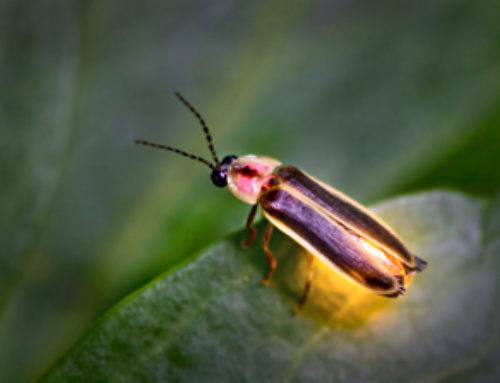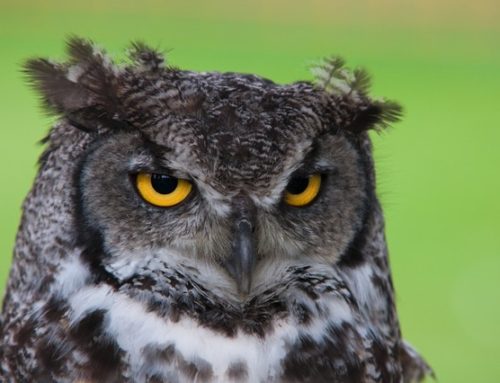Which mammals do you see most often in your neighborhood? Probably squirrels, maybe deer if you’re lucky. But the diversity of mammals in Davidson is much greater than that. In fact, some of the most abundant of all mammals remain hidden from view simply because they come out at night. I am talking, of course, about bats.
Bats can fly, which makes them different from all other mammals. You’re most likely to see bats at dawn and dusk, when they enter and leave their roosts. You can distinguished bats from birds by their more erratic, fluttery manner of flying. The most common species of bat in our region is the big brown bat, an insect-eating bat about three inches long with a wingspan of about six inches. Big brown bats roost in sheltered areas such as the attics and eaves of houses.
If you have bats in your house, begin taking some observations. At dusk, watch the bats as they leave their roost. Do not try to remove the bats, as this will probably hurt them. Indeed, by allowing the bats to stay on your property you may let them feed on moths and other insect pests.
The big brown bat is not the only type of bat that lives here in Davidson. While less common, there is the red bat. Unlike big brown bats, red bats do not roost in people’s houses and usually live alone instead of in colonies. The red bat is a forest-dweller but can sometimes be seen feeding on moths attracted to streetlights at night.
Similar to the red bat is the hoary bat, which is one of the few bats that is a long-distance migrant. It is named for its grey fur, which makes it look like an old person (“hoary” means “white or gray”). Unusually for a bat, the hoary bat is often active for part of the daytime. It also has the widest range of any bat—indeed, possibly one of the widest ranges of any land mammal not introduced by humans. It can be found from Canada to Argentina and as far west as the islands of Hawaii.
If you want to attract bats to your house, put up a bat house. Unlike birdhouses, intended for birds to nest in, bat houses provide sheltered roosting areas for bats all year long. A typical bat house is oriented vertically, with an opening on the bottom so the bats can fly in and out and hang upside-down from the ceiling inside. Plans for bat houses are available online, and you can mount your bat house on a tall pole or on the side of a building.
Bats hunt their prey by sending out high-pitched bursts of sound, much like the sonar on a submarine, which bounce off anything in their path and form a three-dimensional image of the bat’s surroundings. Of course, bats are still quite capable of seeing normally, but in the darkness of the night this sonar is much more useful. If there are bats living in or near your house, you can use these sonar sounds to locate them using a machine called a bat detector. A bat detector picks up the bats’ sonar clicks and converts them to a frequency humans can hear. The bat detector’s sounds should not bother bats. If you have bats near your home, what sounds do they make? Be a bat-watcher and find out!
Bats are a sign of a healthy ecosystem, so if there are bats living in or around your neighborhood, don’t try to get rid of them. Lots of people are afraid of bats, usually for unrealistic reasons. But bats are important, and the more we recognize that, the more we can help preserve and protect them.


